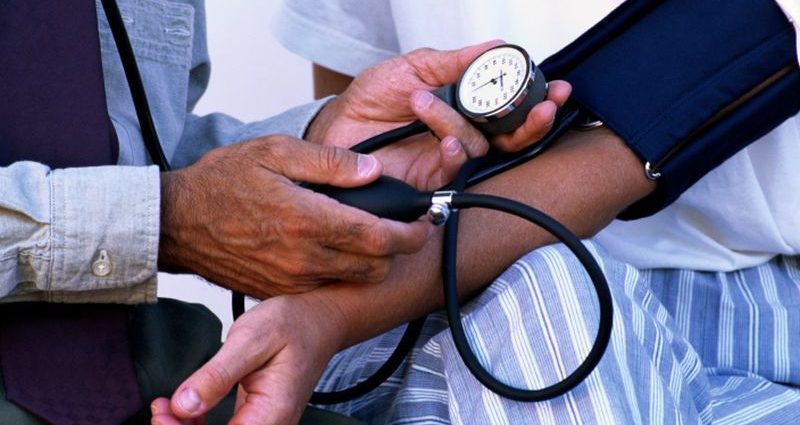WEDNESDAY, March 2, 2022 (HealthDay News) — Can the size of a blood pressure cuff throw off your reading?
Yes, claims a new study that found an ill-fitting blood pressure cuff could make the difference between being accurately diagnosed with high blood pressure or not.
Blood pressure cuffs come in different sizes, and guidelines say health care providers should use the cuff that best fits a patient’s arm. In reality, though, many offices and clinics use one “regular”-size cuff for all adults.
In the new study, researchers wanted to see how well that works. The answer was, not very.
They found that when they used a regular-size cuff on patients with larger arms, it often produced measurements that were far from accurate.
Among patients with “extra-large” arms, the cuff overestimated systolic blood pressure (the top number in a reading) by an average of 20 points.
That could easily move a person with normal or mildly elevated blood pressure into “high” territory, said researcher Dr. Tammy Brady, an associate professor at Johns Hopkins University School of Medicine in Baltimore.
“I don’t think we expected it to make that big of a difference,” she said. “Up to 20 [points] is pretty striking.”
In fact, the study found, 39% of study participants were misdiagnosed with high blood pressure because of an undersized cuff.
On the other hand, loose cuffing underestimated blood pressure in adults with smaller arms. When those patients had their reading taken with a regular-size cuff, it trimmed 4 points from their systolic pressure, on average.
While that was less dramatic than the effect of a tight cuff, it still made a significant difference: Loose cuffs, the study found, would have missed high blood pressure in 22% of study participants.
“It’s likely that many clinicians don’t know how important this is,” Brady noted.
Dr. Willie Lawrence, chair of the American Heart Association’s National Hypertension Control Initiative Advisory Committee, agreed.
Accurately measuring blood pressure, both in health care settings and at home, is “fundamental,” Lawrence said. And that takes specific steps, which include using the proper cuff size.
“People still don’t understand how important that is,” Lawrence said.
He said the new findings “provide very valuable information for all of us who manage blood pressure.”
Brady presented the results Tuesday at an AHA conference being held in Chicago and online. Studies released at meetings are generally considered preliminary until they are published in a peer-reviewed journal.
The findings are based on 165 adults who had their blood pressure measured using a regular-size cuff and, for those with larger or smaller arms, a cuff that actually fit.
Of the participants, 39 had an “extra-large” arm circumference, between 16 and 22 inches. When their blood pressure was taken with a cuff that fit, the average systolic reading was 124 mm Hg — below the cutoff for diagnosing high blood pressure.
But when a regular size cuff was used, that number jumped to 144 mm Hg — which is considered stage 2 high blood pressure.
The opposite was true for people with a small arm circumference of about 8 to 10 inches. When their blood pressure was measured with a regular cuff, the systolic reading averaged 119 mm Hg. With a correctly fitted cuff, that increased to 123 mm Hg.
Systolic blood pressure is considered “elevated” when it goes above 120 mm Hg, while a number between 130 and 139 mm Hg is considered stage 1 high blood pressure.
Cuff size is just as important for home blood pressure monitoring, both Brady and Lawrence said.
Some home monitors come with a cuff that fits a wider range of arm sizes, Brady said. There are also monitors with extra-large cuffs — though, Brady noted, they can cost much more than other devices.
Cuff size is not the only concern, though. Brady said that people using home monitors need to be aware of positioning (sitting upright, feet on the floor, arm supported at chest level) and timing (taking measurements after using the bathroom, and after sitting quietly for five minutes).
“Everyone needs to recognize how important these steps are,” Brady said.
Lawrence recommended that patients bring their home monitor to their next doctor’s appointment, to make sure they are using it correctly and getting accurate readings.
More information
The American Heart Association explains how to use home blood pressure monitors.
SOURCES: Tammy Brady, MD, PhD, associate professor, pediatrics, and vice chair, clinical research, Department of Pediatrics, Johns Hopkins University School of Medicine, Baltimore; Willie Lawrence, MD, medical director, Center for Better Health and Cardiovascular Wellness, Spectrum Health Lakeland, Benton Harbor, Mich., and chair, National Hypertension Control Initiative Advisory Committee, American Heart Association, Dallas; American Heart Association’s Epidemiology, Prevention, Lifestyle & Cardiometabolic Health Conference 2022, Chicago, presentation, March 1, 2022
Copyright © 2025 HealthDay. All rights reserved.

